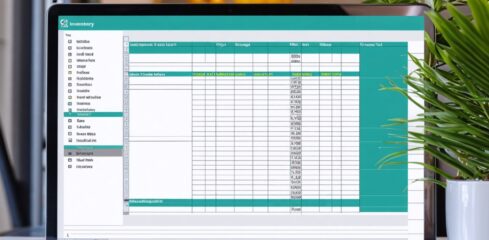Objectives of Inventory Management

Inventory management can be tricky to master, but it’s essential that every commercial business practices financially responsible inventory management to promote business growth and maintain good customer relations.
Decades ago, inventory management was typically done by pen and paper — and tedious hours of manual data entry. Today, most retailers use inventory management software that can automate much of that work for them. In fact, there are hundreds of inventory management systems on the market now with incredibly advanced capabilities. The right inventory management system can dramatically increase your total revenue by cutting down on human error, increasing reporting accuracy and enabling you to have better control over the products in your stock.
What Does Inventory Management Do?
Inventory management essentially means tracking your inventory’s quantities and locations while keeping your inventory levels high enough to fulfill orders and perform other sales and production activities smoothly. When you manage your inventory, your goal is to maximize your profits while keeping your costs at a minimum, which means knowing when you need to scale — but also when you need to shrink production.
So what’s the point of inventory management? The ultimate goal is to manage your inventory in a way that yields the highest profit for your business.
Inventory Management Basics
Inventory management deals with layers of complexities that continue to grow as a business scales. That said, the basics generally remain the same regardless of business size. Any company that manufactures, sells or resells goods needs an inventory management system to:
- Keep inventory at an appropriate level at all times
- Manage the flow of goods through stores and warehouses
- Make sure orders are fulfilled with timeliness and accuracy
- Eliminate excess inventory and stock-out situations
- Track inventory correctly and maximize profits
To maximize the cost-effectiveness of your business operations, you’ll need to have a firm grasp of your inventory processes.
The Challenges of Meeting Inventory Management Goals
Inventory management is not a one-size-fits-all practice, especially for larger businesses. Retailers are bound to face challenges, and some of these challenges may be completely unavoidable. However, a good inventory management system will help you overcome obstacles and maintain smooth inventory operations.
Some common challenges to meeting inventory management goals include:
- Disruptions in the supply chain resulting in delayed orders
- Disparities in inventory reports, which take valuable time to resolve
- An outdated or inefficient inventory management system
- Sudden increases in customer demand, which can lead to stock-out situations if you don’t have a sufficient contingency plan
- Inefficient processes or learning curves with new systems
If you’re experiencing challenges with meeting your inventory management goals, it’s time to assess your current inventory management system.
Our Solution for Optimizing Inventory Management
To optimize your inventory management, you need a cloud-based system that can scale with your growing business. Finale Inventory has the software you need to organize, track and generate reports for your inventory whether you’re a business just starting out or a global retailer. Get started on the path to reaching your inventory management goals by downloading a free trial of our software now!





